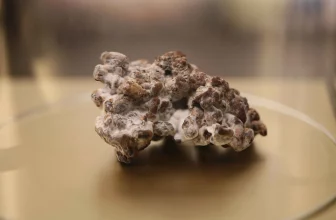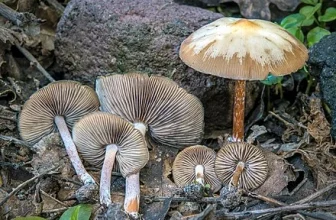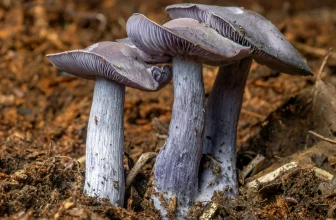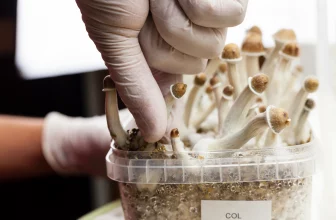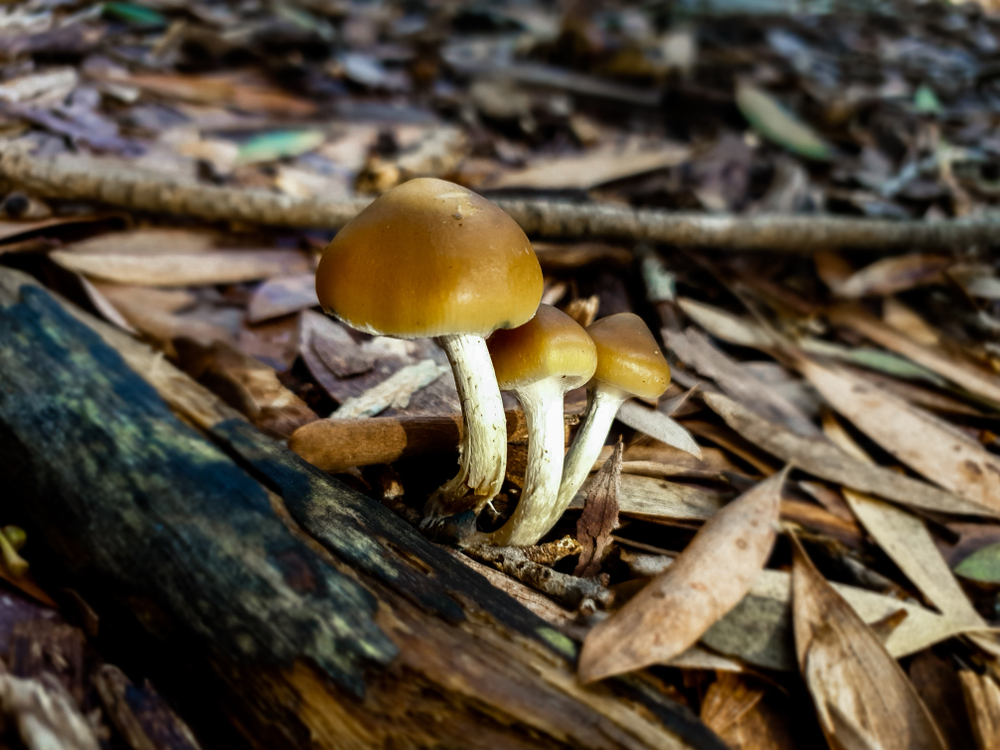
Despite a common misconception, the broad term “magic mushrooms” encompasses many different species that all produce slightly different effects. Knowing the exact variety of mushrooms you’re ingesting will help you choose the right dose and maximize the benefits while reducing the chances of negative side effects.
The legality of magic mushrooms varies around the world, including by species, so there’s another benefit to knowing exactly what you’ve got. Psilocybe subaeruginosa is one of the lesser-known psychedelic mushrooms due to its limited natural range. But cultivation has made it more popular in areas where it can’t be found in the wild.
Where and How Do These Mushrooms Grow?
Also known as P. Subs, Submarines, or Golden Tops, Psilocybe subaeruginosa are unique because they are limited to a native range of Australia and New Zealand alone. While the well-known Psilocybe cubensis also grows in Australia, it has a wider range beyond the island nations because it is an introduced species. The subaeruginosa species is only found in other countries if it is imported and cultivated there. In the wild, it grows all over Australia and New Zealand in a wide range of habitats.
Its propensity for growing in wood chips used in landscaping has given it a common range throughout suburban and urban areas. It was first discovered in 1915 in New South Wales, but it didn’t become well-known as a magic mushroom until the 1960s.
Active Ingredients in This Variety of Mushroom
Like most magic mushrooms that are part of the Psilocybe genus, this variety includes the active ingredient psilocybin. When tested, these mushrooms contained only trace amounts of other common active ingredients like psilocin.
If you did not like some of the effects of other common varieties like Psilocybe cubensis, you might prefer this variety because of its lack of psilocin. Like all mushrooms, the bulk of the mushroom is made up of an inert material known as chitin. It can be difficult to digest, which is why species like Psilocybe subaeruginosa can cause a stomach ache or nausea when consumed fresh or dry. The effects can be intense due to the high levels of active ingredients, but these mushrooms tend to create the same hallucinations and sense of boosted mood that other magic mushrooms are known for.
Identifying Psilocybe Subaeruginosa
It can be difficult to identify these mushrooms in the wild, and they’re easily mistaken for species that can be poisonous, such as Galerina. If you suspect you have Psilocybe subaeruginosa in the wild, they must be identified by a professional to verify your identification.
First, these mushrooms always appear in well-rotted logs and wood chips and won’t pop up in cow manure, amid thick grass, or on fresh logs. The spore print is dark purple. Thin and crowded gills are cream-colored at first and turn purple-brown as the cap ages due to spore release. The caps are tightly curled when they first emerge, then open widely and become wavy with a raised center. The color of the cap is a deep caramel orange-brown, with a rubbery to wet appearance. Stems are thin and brown or purple towards the bottom and whitish at the top. Like most Psilocybe species, it turns blue when damaged or bruised.
How Are These Mushrooms Commonly Taken?
Like other types of magic mushrooms, this variety is often taken mixed into edibles or dried and packed into capsules. When taken dry, it’s often made into tea rather than consumed directly. Depending on the strength of the specific flush of mushrooms, a dose can range from .5 to .8 grams.
Comparing Subaeruginosa to Other Types of Mushrooms
The low weight of a recommended starter dosage for this strain is due to its high psilocybin content. Compared to the other species commonly used as magic mushrooms today, Psilocybe subaeruginosa are among the strongest. Some studies have found content as high as 1.9% psilocybin by weight, which puts it above the 1.6% found in P. cyanescens and the .8% or less in P. cubensis. When strength matters, the P. subaeruginosa variety stands out from the rest of the pack.
Cultivating Psilocybe Subaeruginosa
Due to their preference for growing among wood chips and well-rotted logs, these mushrooms are harder than others to cultivate at home. Aside from concerns about the legality of cultivating them, you’ll need to sterilize hardwood chips and keep them protected from other species that could overtake the colony after inoculation. Some people have used terrariums and other sealed container systems to encourage fruiting after letting the spores establish and spread into mycelium through the wood chips.
Psilocybe subaeruginosa mushrooms have a distinctive look and produce an even more unforgettable experience. Consider this type of magic mushroom if you’re looking for a different journey than you would get from the same old P. cubensis shrooms.


